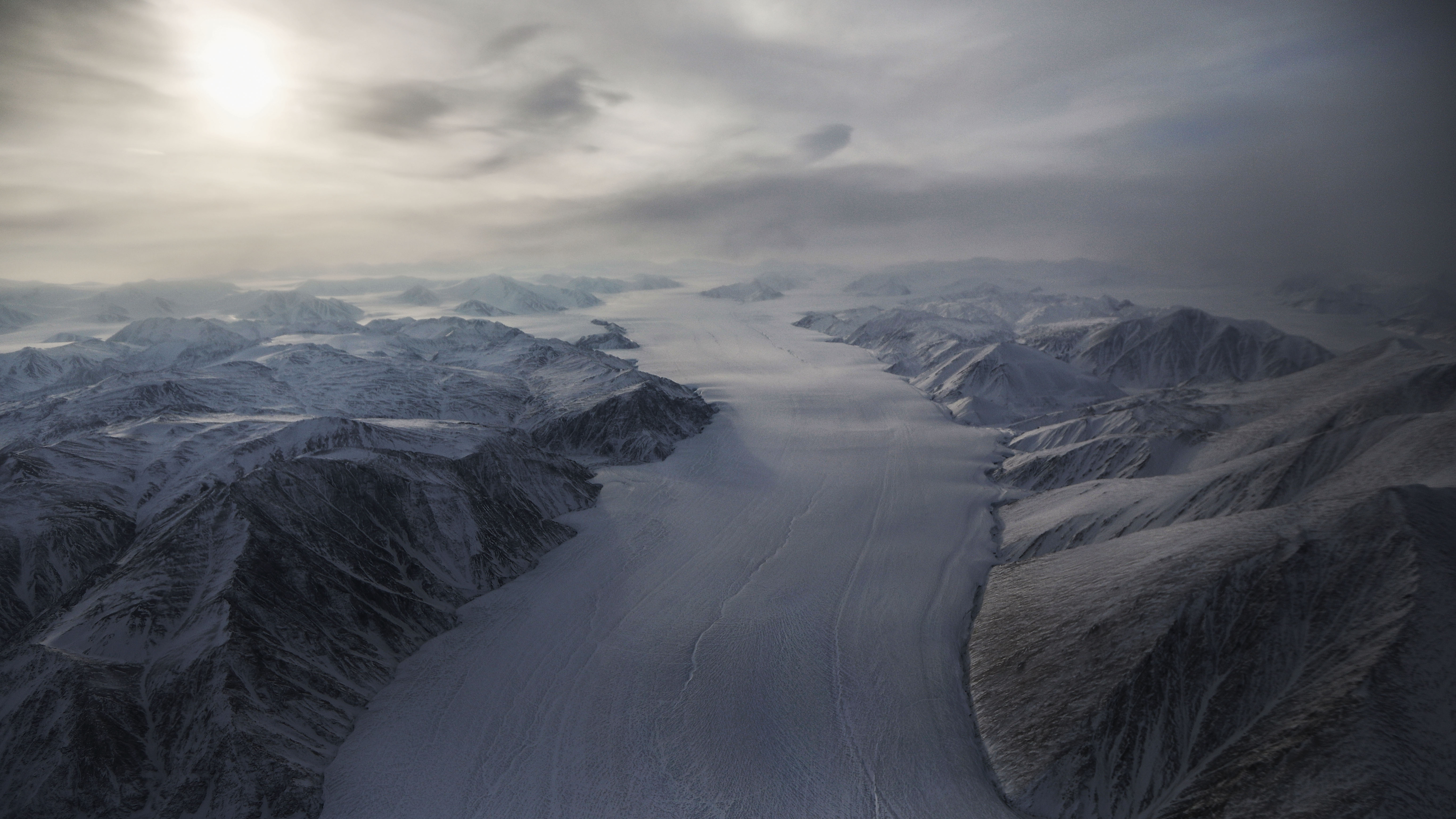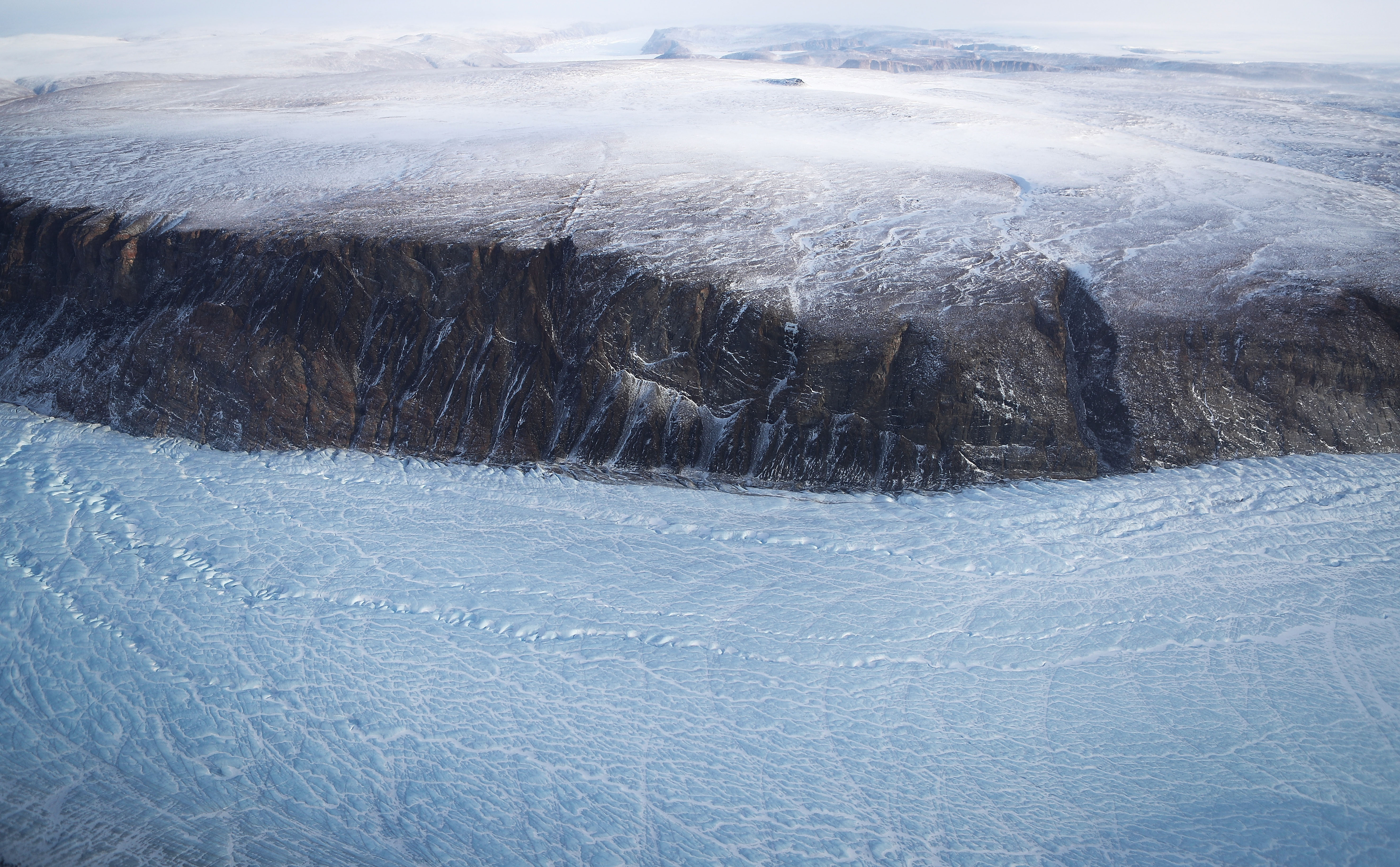
A section of a glacier is seen from NASA's Operation IceBridge research aircraft on March 29, 2017 above Ellesmere Island, Canada/ Getty Images
A section of a glacier is seen from NASA's Operation IceBridge research aircraft on March 29, 2017 above Ellesmere Island, Canada/ Getty Images
Editor's note: Lan Shunzheng is a research fellow at Charhar Institute and a member of the Chinese Institute of Command and Control. The article reflects the author's opinions, and not necessarily the views of CGTN.
Alaskan Senator Dan Sullivan recently made remarks at the Wilson Center, Washington that the United States would deploy 150 fifth-generation fighter jets in the state's Arctic region, Sputnik reported on September 14. This is consistent with the U.S.' increasing interests in the region.
Today, the value of the Arctic is widely understood. On the one hand, the Arctic is rich in natural resources. According to data from the U.S. Geological Survey, there are 90 billion barrels of oil, 1,669 trillion cubic meters of natural gas and 44 billion barrels of liquid natural gas in the Arctic Circle. At the same time, the Arctic has a large amount of rare earth resources. Currently, it is estimated that the rare earth oxides in the Arctic region are about 127 million tons. In addition, the Arctic has abundant renewable resources such as hydropower, wind power, solar photovoltaic power generation and geothermal energy, which can be used for electricity, heating and transportation.
On the other hand, the strategic value of the Arctic shipping route is also not to be neglected. It is predicted that by 2040, the Arctic could be ice-free in the summer, and threes route through the Arctic will be opened.
The Northeast Passage, starting from the North Sea by the Russian Arctic coastal waterway and crossing the Bering Strait which finally leads to Japan. The Northwest Passage, starting from northeastern Canada's Davis Strait along Canada's northern coast to Alaska. And the Transpolar Sea Route which goes through the channel in the middle of the North Pole.
These routes will contribute to the formation of an Arctic economic circle encompassing Russia, North America, Europe and East Asia, with profound implications for the world's economic, trade and geopolitical landscape. For example, once the Northwest passage and the Northeast Passage are opened, they will become the shortest route connecting northeast Asia with western Europe and the eastern and western coasts of North America, which can not only save about 40 percent of the transportation costs, but also become an alternative to the Suez Canal, Panama Canal and The Strait of Malacca.

A section of glacier (BOTTOM) is seen from NASA's Operation IceBridge research aircraft along the Upper Baffin Bay coast on March 27, 2017 above Greenland. /Getty Images
A section of glacier (BOTTOM) is seen from NASA's Operation IceBridge research aircraft along the Upper Baffin Bay coast on March 27, 2017 above Greenland. /Getty Images
Russia is currently America's biggest rival in the Arctic. In 2014, the country established the Arctic Strategic Command, based on the Northern Fleet, to coordinate all Russian military forces deployed in the Arctic region. In the same year, Russia completed the construction of an Arctic "clover" military base. In addition to having the world's largest fleet of about 40 icebreakers as part of its Arctic operations, Russia has recently been developing new ice-breaking patrol ships and nuclear-powered icebreakers. All of these demonstrate Russia's dominant position in the Arctic.
In November 2018, Mikhail Mitzentsev, director of the National Defense Management Center of the Russian Ministry of Defense, also said that foreign military vessels should inform relevant departments of the Russian government before using the Arctic shipping routes.
Not wanting to lag behind, the United States has also begun to look increasingly to the Arctic for opportunities in recent years. In May 2013, the United States issued its first national strategy for the Arctic Region and gave strategic priority to the Arctic.
In June 2019, the Pentagon released a new Arctic strategy report outlining its strategic approach to protecting U.S. national security and interests in the Arctic in an "era of strategic competition."
The U.S. currently has only two icebreakers, and both are under repair. In June, Mr Trump proposed building a new fleet of icebreakers by 2029, with plans for three heavy icebreakers and a range of medium-sized ones.
On the military front, the first two F-35As arrived at Elson Air Force Base in Alaska on April 21, marking the first base of the U.S. Pacific Air Force Command with the F-35A Lightning II, according to the Air Force's website.
In August, the Air Force's 356th Fighter Squadron and 388th Fighter Wing's F-35A Lightning II participated in Red Flag, Alaska, a 10-day 10-day air combat U.S. Air Force training exercise, the first five-generation F-35 to participate in a U.S. Pacific Air Force exercise.
Combined with Senator Sullivan's remarks, some analysts believe that in the future Alaska will become the state that has the most U.S. fifth-generation fighter aircraft. The senator revealed that Nome, a city in Alaska, will be expanded to eventually become America's first deep-water port in the Arctic, "signaling" to big powers like Russia that the United States is prepared to defend its interests in the Arctic.
Furthermore, according to another news report by Sputnik, a Georgetown University Professor has also recently said that containing China in the Arctic is in the interests of the United States. This shows that, not only is the U.S. scrambling to compete with Russia, it is also very much wary of China's presence in the region. While trying to expand the U.S. footprint in the region, it also actively targets China, reflecting its long-term plan to contain the country. Given this series of developments we can only foresee that the competition in the Arctic will intensify further in the future.
(If you want to contribute and have specific expertise, please contact us at opinions@cgtn.com.)